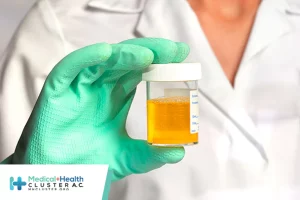CONDENA MH CLÚSTER ATAQUE ARMADO A HOSPITAL ARCÁNGELES
Leer más
Comparison of SARS-CoV-2 Antibody Response 4 Weeks After Homologous vs Heterologous Third Vaccine Dose in Kidney Transplant Recipients

Question Does a heterologous SARS-CoV-2 vaccination strategy with the vector vaccine Ad26COVS1 result in a higher rate of antibody response compared with a homologous third dose of mRNA vaccine (mRNA-1273 or BNT162b2) in kidney transplant recipients who did not develop SARS-CoV-2 antibodies after 2 doses of an mRNA vaccine?
Findings This randomized clinical trial found that a third dose of SARS-CoV-2 vaccine in 197 kidney transplant recipients without antibodies after 2 doses of an mRNA vaccine induced an antibody response in 35% of the homologous (mRNA) group vs 42% of the heterologous (vector) group, with no statistically significant difference.
Meaning The findings of this randomized clinical trial show that homologous and heterologous vaccination strategies for a third SARS-CoV-2 vaccine dose in kidney transplant recipients are comparable, with both mRNA and vector vaccines achieving seroconversion in more than one-third of kidney transplant recipients. However, given the high rate of nonresponders after the third dose, additional strategies to induce an immune response in kidney transplant recipients are urgently needed.
Importance Fewer than 50% of kidney transplant recipients (KTRs) develop antibodies against the SARS-CoV-2 spike protein after 2 doses of an mRNA vaccine. Preliminary data suggest that a heterologous vaccination, combining mRNA and viral vector vaccines, may increase immunogenicity.
Objective To assess the effectiveness of a third dose of an mRNA vs a vector vaccine in KTRs who did not have antibodies against the SARS-CoV-2 spike protein after 2 doses of an mRNA vaccine.
Design, Setting, and Participants This was a single center, single-blinded, 1:1 randomized clinical trial of a third dose of vaccine against SARS-CoV-2, conducted from June 15 to August 16, 2021, in 201 KTRs who had not developed SARS-CoV-2 spike protein antibodies after 2 doses of an mRNA vaccine. Data analyses were performed from August 17 to August 31, 2021.
Interventions mRNA (BNT162b2 or mRNA-1273) or vector (Ad26COVS1) as a third dose of a SARS-CoV-2 vaccine.
Main Outcomes and Measures The primary study end point was seroconversion after 4 weeks (29-42 days) following the third vaccine dose. Secondary end points included neutralizing antibodies and T-cell response assessed by interferon-γ release assays (IGRA). In addition, the association of patient characteristics and vaccine response was assessed using logistic regression, and the reactogenicity of the vaccines was compared.
Results Among the study population of 197 kidney transplant recipients (mean [SD] age, 61.2 [12.4] years; 82 [42%] women), 39% developed SARS-CoV-2 antibodies after the third vaccine. There was no statistically significant difference between groups, with an antibody response rate of 35% and 42% for the mRNA and vector vaccines, respectively. Only 22% of seroconverted patients had neutralizing antibodies. Similarly, T-cell response assessed by IGRA was low with only 17 patients showing a positive response after the third vaccination. Receiving nontriple immunosuppression (odds ratio [OR], 3.59; 95% CI, 1.33-10.75), longer time after kidney transplant (OR, 1.44; 95% CI, 1.15-1.83, per doubling of years), and torque teno virus plasma levels (OR, 0.92; 95% CI, 0.88-0.96, per doubling of levels) were associated with vaccine response. The third dose of an mRNA vaccine was associated with a higher frequency of local pain at the injection site compared with the vector vaccine, while systemic symptoms were comparable between groups.
Conclusions and Relevance This randomized clinical trial found that 39% of KTRs without an immune response against SARS-CoV-2 after 2 doses of an mRNA vaccine developed antibodies against the SARS-CoV-2 spike protein 4 weeks after a third dose of an mRNA or a vector vaccine. The heterologous vaccination strategy with a vector-based vaccine was well tolerated and safe but not significantly better than the homologous mRNA-based strategy.
Trial Registration EudraCT Identifier: 2021-002927-39
Kidney transplant recipients (KTRs) are considered at high risk for severe COVID-19 disease, and therefore, were prioritized for early SARS-CoV-2 vaccination.1,2 Immune response to vaccination is reduced in immunosuppressed individuals, including KTRs.3 In the US and the European Union, 2 classes of SARS-CoV-2 vaccines are currently available: (1) mRNA (mRNA-1273 [Moderna] and BNT162b2 [PfizerBioNTech]) and (2) viral vector (ChAdOx1 [AstraZeneca] and Ad26COVS1 [Janssen]). Among these, Ad26COVS1 is the only vaccine that has been shown to induce a protective immune response after a single dose.4
Recent studies from Israel and the US confirmed that only 54% and 38% of KTRs developed antibodies against the spike protein following vaccination with 2 doses of an mRNA vaccine.5,6 The type of immunosuppression substantially effects the immune response in KTRs, and patients treated with co-stimulation blockade (belatacept) show even lower immune response rates (only 6%).7,8 Additional risk factors identified for nonresponsive KTRs are the time elapsed since the transplant and lymphocyte-depleting induction therapy.9
Proposed strategies to improve response to SARS-CoV-2 vaccination include additional dosing and heterologous booster vaccination. The T-cell response against the SARS-CoV-2 spike protein after mRNA vaccination is severely impaired in KTRs.10 Adenovirus-based vector vaccines introduce a stronger T-cell response in mouse models that could help overcome immunosuppression in KTRs.11,12 Recent data showed a higher reactogenicity of heterologous boosting among the general population, as well as higher antibody and T-cell responses after heterologous compared with homologous vaccination.13-15
Initial reports of a third dose of a SARS-CoV-2 vaccine in non- or low-responders showed promising results, with more than 1 in 3 patients developing antibodies against SARS-CoV-2.16-18 We hypothesized that in KTRs who did not develop antibodies against SARS-CoV-2 after 2 doses of mRNA vaccines, a heterologous vaccination strategy with a viral vector would improve the humoral response against SARS-CoV-2 compared with a third dose of the same mRNA vaccine.
This was an investigator-initiated, single center, single-blinded, 1:1 randomized clinical trial to assess the effectiveness of a heterologous vaccination strategy using Ad26COVS1 (viral vector) compared with a homologous strategy using either BNT162b2 or mRNA-1273 (mRNA) as a third dose in KTRs who did not develop SARS-CoV-2 spike protein antibodies after 2 doses of an mRNA vaccine. Patients were blinded for the type of vaccine administered. The trial was conducted from June 15 to August 16, 2021, at the Department of Nephrology and Dialysis at the Medical University of Vienna (Austria). The trial was registered with the European Union Clinical Trial Register and was approved by the ethics committee of the Medical University of Vienna (No. 1612/2021) as well as by the Austrian Agency for Health and Food Safety. The complete trial protocol is available in Supplement 1. The study was conducted in accordance with the principles of the Declaration of Helsinki and was sponsored by the Medical University of Vienna. All study participants provided written informed consent before study entry.
The study population comprised adult KTRs without detectable SARS-CoV-2 spike protein antibodies 4 or more weeks after the second dose of an mRNA vaccine. Participants with a prior documented SARS-CoV-2 infection, a positive test result for SARS-CoV-2 nucleocapsid antibodies at the time of screening, or who were being treated with triple anticoagulation therapy were not eligible for study participation. A negative pregnancy test result was required for all female participants of reproductive age prior to third-dose vaccination.
The primary outcome was the difference in seroconversion rate (ie, detectable SARS-CoV-2 spike protein antibodies at a level >0.8 units [U]/mL) between the mRNA and vector vaccination groups after 4 weeks (29-42 days) following the third dose. In secondary analysis, we used a higher cutoff level (>15 U/mL), which exhibits a positive predictive value of more than 99% for presence of neutralizing antibodies (per the immunoassay manufacturer’s instructions) and cutoff levels recently reported in the literature19-21 to correlate with neutralizing capacity, as well as the reduced risk for COVID-19 infection (>100 U/mL19; >141 binding antibody units [BAU]/mL20; >264 BAU/mL21). Note that BAU/mL were converted to U/mL (U/mL = 0.972 × BAU/mL). Additional secondary outcomes included differences in SARS-CoV-2 antibody levels between mRNA and vector vaccinated groups as well as interferon-γ produced by SARS-CoV-2 specific T-cells. Furthermore, differences in the amount of interferon-γ produced by SARS-CoV-2–specific T-cells after the second and third vaccination were evaluated.
We also explored patient characteristics at baseline and any potential associations between characteristics and vaccine response. Differences in reactogenicity were assessed using a visual analogue scale (0, no symptoms; 1-2, mild; 3-4, moderate; 5, severe) to describe local adverse effects (ie, pain, rash, itching, swelling) and systemic adverse effects (ie, fatigue, headache, dizziness, nausea, myalgia, fever, need for pain medication).
Patients were randomized 1:1 to receive a third dose of the same, previously administered, mRNA vaccine (mRNA-1273 or BNT162b2) or a single dose of the vector vaccine (Ad26COVS1). Randomization was stratified by maintenance immunosuppressive regimen calcineurin inhibitor (CNI) vs co-stimulation blockade (belatacept). To ensure that comparison groups were approximately the same size, we applied block randomization with a block size of 4 to balance participants randomized to each group.
Participants received a single intramuscular dose of an mRNA-based vaccine (BNT162b2 or mRNA-1273) or a vector-based vaccine (Ad26COVS1) within 28 days of being screened for study participation. A follow-up visit with each participant was conducted on days 29 to 42 after vaccination to evaluate their immune response level and for a structured evaluation of any adverse reactions.
Antibody response was evaluated using the Elecsys® Anti-SARS-CoV-2 enzyme immunoassay (Roche Diagnostics), which tests for the receptor-binding domain of the SARS-CoV-2 spike protein (cutoff, ≥0.8 U/mL; per manufacturer’s instructions). Samples with levels below the limit of detection were set to 0.2 U/mL. The measured U/mL are highly correlated with the World Health Organization’s International Standard BAU/mL (r = 0.9996; U/mL = 0.972 × BAU/mL; per manufacturer’s instructions). The functional neutralization capacity of the antibody response was assessed using the surrogate virus neutralization test (sVNT) cPass™ (GenScript). The sVNT was used according to the manufacturer’s instructions (cutoff, ≥30% signal inhibition) for test result positivity indicating the presence of neutralizing antibodies.
We used QuantiFERON SARS-CoV-2 assays (Qiagen), a SARS-CoV-2 spike protein-specific interferon-γ release assay (IGRA), to assess T-cell response at screening and 4 weeks after the third vaccination. Assays were processed according to the manufacturer’s instructions. Results less than 0.005 IU/mL were set to 0.005 IU/mL. The sum of the results from the 2 antigen tubes (Ag1, Ag2) is reported throughout the Results section of this article. Signals greater than 0.1 IU/mL were considered to be positive. This cutoff was derived as the mean plus 2 SDs from prepandemic controls (n = 13).
Torque teno virus (TTV) DNA was quantitated from 200 μL of plasma by real-time polymerase chain reaction, as previously described. The TTV serves as a surrogate for the overall state of the immune system and viral control in immunosuppressed individuals.22
Demographics of the study participants were summarized as medians (IQRs) for continuous covariates and absolute and relative frequencies for categorical parameters. A Fisher exact test was used to test for statistically significant differences in the rate of responders (ie, antibodies >0.8 U/mL threshold) between groups. Statistically significant difference in antibody and interferon-γ concentration between the 2 treatment arms was assessed using Wilcoxon rank sum tests. Patient-specific change in interferon-γ concentration after the second and the third vaccination was evaluated using a Wilcoxon signed rank test. Univariable logistic regression models were used to test the association of patient characteristics with seroconversion after the third vaccination. All secondary end point analyses were conducted in an exploratory fashion and no adjustment for multiple testing was performed. Based on available literature, there was no preliminary data available to assess effect size of a third vaccination nor heterologous vaccination using a vector dose after primary vaccination with an mRNA vaccine. Fisher exact test was used to test for statistically significant differences in patient reported adverse effects, and Cramér V was calculated as a measure of association. Based on available literature,17 we estimated a response rate of 30% for a third vaccination with an mRNA vaccine. Enrollment of 100 patients per group (expecting a drop-out rate of ≤5%) would provide 80% power (alpha error, 5%) to detect a statistically significant increase in the response rate for the vector vaccine of 20% compared with the mRNA vaccines. Statistical tests were 2-tailed and a P value < .05 was considered statistically significant. Data analyses were performed from August 17 to August 31, 2021, using R, version 4.1 (The R Foundation for Statistical Computing).
The study population totaled 197 kidney transplant recipients (mean age [SD], 61.2 [12.4] years; 115 [58%] men; 82 [42%] women; race and ethnicity were not recorded) who had not experienced an antibody response to 2 prior mRNA vaccinations. Of the 201 patients that had been enrolled and randomized to receive a third dose of a homologous (mRNA) vaccine (n = 101) or a heterologous (Ad26COVS1) vaccine (n = 100), 2 participants in the mRNA group were lost to follow-up, 1 participant in the vector group withdrew consent before vaccination, and another in the vector group died of a myocardial infarction 4 weeks after vaccination. Therefore, a total of 197 patients were available for the prespecified analyses of the primary end point (Figure 1). Patient characteristics are provided in the Table. There were no statistically significant differences between groups at baseline.
Four weeks after the third vaccination, 76 patients had developed antibodies against the SARS-CoV-2 spike protein (>0.8 U/mL), for an overall response rate of 39%. There was no statistically significant difference between the homologous and heterologous vaccination strategies, with a response rate of 35% vs 42% for mRNA vs vector vaccine (OR, 1.31; 95% CI, 0.71-2.44; P = .38).
Applying the antibody cutoff levels ( >15 U/mL; >100 U/mL; >141 BAU/mL; and >264 BAU/mL), the overall response rate at 4 weeks was 22%, 8%, 6%, and 3%, respectively, with no statistically significant differences between groups (15 U/mL, 21% vs 23% [OR, 1.14; 95% CI, 0.55-2.36; P = .73]; 100 U/mL, 6% vs 10% [OR, 1.76; 95% CI, 0.55-6.14; P = .31]; 141 BAU/mL, 4% vs 7% [OR, 1.82; 95% CI, 0.45-8.78; P = .37]; 264 BAU/mL, 3% vs 3% [OR, 1.01; 95% CI, 0.13-7.74; P > .99] for mRNA and vector vaccine, respectively). Figure 2 shows antibody levels following the third vaccination with mRNA and vector vaccines; mean antibody levels for mRNA and vector vaccine were 22 and 33 U/mL, respectively. Only 22% of the positive antibody responses (>0.8 U/mL) showed functional neutralizing capacity (eFigure 1 in the Supplement 2). There was no statistically significant difference between the mRNA and vector vaccine groups regarding antibodies with neutralizing capacity (6% vs 11% for mRNA and vector vaccine, respectively; OR, 1.95; 95% CI, 0.63-6.72; P = .22). eFigure 1 in the Supplement 2 shows the correlation of immunoassay and neutralizing capacity tests.
The overall T-cell response assessed by IGRA was low with only 17 KTRs showing a positive reactivity against the SARS-CoV-2 spike protein (9 in the mRNA and 8 in the vector group; OR, 0.86; 95% CI, 0.27-2.64; P = .80). There was no statistically significant difference in reactivity between groups after the third vaccination (mean, 0.049 IU/mL and 0.037 IU/mL for mRNA and vector groups, respectively; P = .19; Figure 2). However, we observed an increase in reactivity between the screening and follow-up time points (mean, 0.028 IU/mL and 0.043 IU/mL, respectively; P = .02; eFigure 2 in the Supplement 2).
Figure 3 provides an overview of predictors associated with response to the third vaccination. Type of vaccine received as the third dose was not associated with antibody development after vaccination (OR, 1.32; 95% CI, 0.74-2.35; P = .35). Patients not on triple-maintenance immunosuppression had a significantly higher chance of developing antibodies compared with patients on triple immunosuppression (OR, 3.59; 95% CI, 1.33-10.75; P = .01). Most patients (92%) were on a CNI-based immunosuppressive regimen; only (7%) received belatacept-based immunosuppression. Only 21% of patients on belatacept developed SARS-CoV-2 spike protein antibodies; however, there was no statistically significant difference in the response rate of patients on belatacept (OR, 0.41; 95% CI, 0.09-1.37; P = .18). In line, lower TTV levels were associated with response to the vaccine (OR, 0.92; 95% CI, 0.88-0.96; P < .001 per doubling of TTV copies [co] /mL). Furthermore, longer time since last kidney transplant was also associated with a higher chance of developing an antibody response after the third dose (OR, 1.44; 95% CI, 1.15-1.83; P = .002 per doubling of years). Recipient age, sex, donor type, number of transplants, and time between second and third vaccinations did not show a statistically significant association.
Créditos: Comité científico Covid




